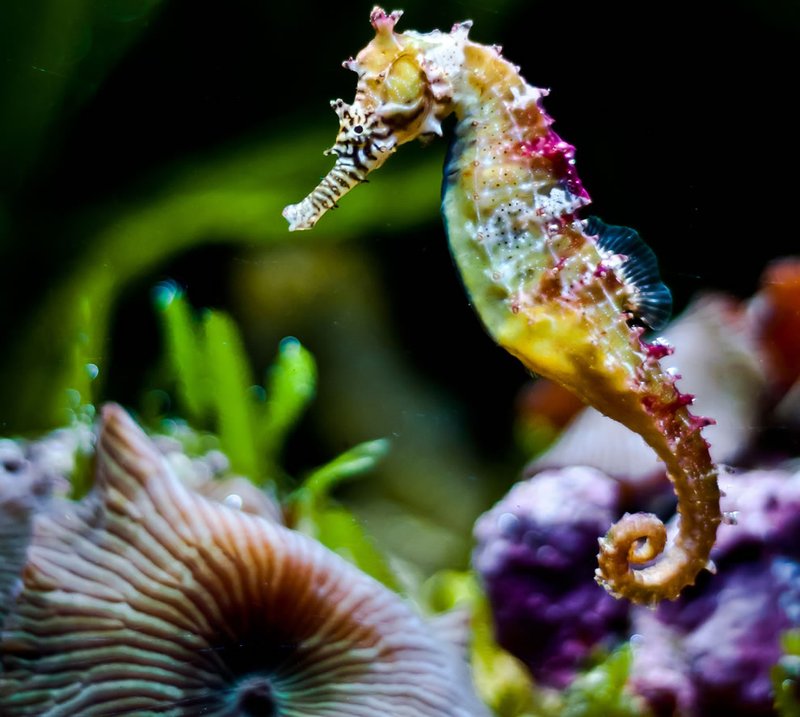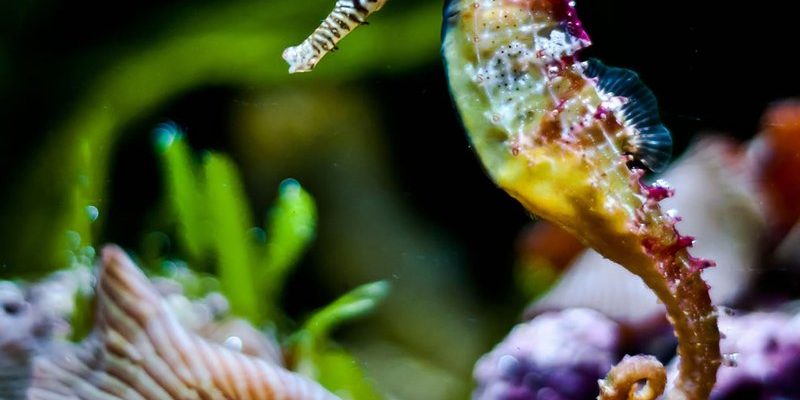
Imagine sipping your favorite drink while chatting about these enchanting creatures. You might find yourself wondering why seahorses are often seen as symbols of love and fidelity, or what ancient cultures believed about them. Their unusual biology and behavior lend themselves to a variety of stories and interpretations through different lenses. In this article, we’ll dive deeper into the myths and cultural beliefs surrounding seahorses, revealing how these charming creatures have inspired tales and traditions around the world.
The Seahorse in Ancient Mythology
Seahorses have a long history in mythology. In ancient Greece, they were associated with Poseidon, the god of the sea. Often depicted riding a chariot pulled by seahorses, Poseidon was seen as a powerful figure controlling the ocean’s temperamental nature. This imagery didn’t just paint seahorses as whimsical creatures; it elevated them to a status of majesty. Their connection with Poseidon made them symbols of strength and power over the ocean.
The Romans, too, held seahorses in high regard. They believed these creatures had the ability to calm the seas. Sailors would keep charms made from seahorse parts, believing they would protect them from stormy weather. It was as if these tiny fish were viewed as guardians of the ocean, bringing safety and good fortune to those brave enough to venture into its depths.
In cultures around the world, the seahorse has taken on various symbolic meanings. For example, in some Native American traditions, they symbolize patience and contentment. This connection to serenity emphasizes how beings from the natural world can embody ideas and values that resonate deeply with human experiences.
Seahorses and Love: A Symbol of Fidelity
One of the most cherished beliefs about seahorses is their association with love and fidelity. These creatures are famous for their unique mating habits. Seahorses are monogamous, often choosing a single partner for life. They can be seen dancing together in a beautiful courtship display, intertwining their tails as a sign of affection. This behavior has led many cultures to view them as symbols of loyalty and lasting love.
In fact, some people believe that giving a seahorse charm or decor item can bring good luck in relationships. This belief is especially popular in wedding traditions, where seahorses are often incorporated into bridal themes. Couples may use them as part of their decor or wedding favors, symbolizing their commitment to each other and the delightful journey of love they’re embarking on.
It’s also interesting to note that male seahorses carry the babies—yes, you heard that right! In seahorse pregnancies, the males go through a process where they actually carry the fertilized eggs in a pouch. This role reversal in parenting adds another layer to their representation of love and partnership, showcasing how relationships can be unique and beautifully diverse.
Cultural Significance in Art and Literature
Seahorses have inspired numerous artistic expressions throughout history. From ancient pottery to modern illustrations, these creatures have been depicted in various forms of art. The unique structure of a seahorse, with its curled tail and ornate head, provides a visually striking subject for artists.
In literature, seahorses often symbolize transformation and adaptability. Their ability to thrive in different environments has been compared to human resilience in facing life’s challenges. Writers have used seahorses as metaphors for personal growth and the beauty of change, reminding us that just like these enchanting fish, we can embrace our journeys, regardless of the waves that come our way.
Even in modern pop culture, the seahorse continues to capture attention. From children’s books to animated films, these characters resonate with audiences of all ages. Their whimsical appearance and fascinating behaviors make them a beloved subject for storytelling, reminding us of the wonder of nature and its many mysteries.
Seahorses in Traditional Medicine and Folklore
In some cultures, seahorses have been used in traditional medicine. Ancient Chinese medicine, for instance, prized seahorses for their supposed healing properties. They were dried and ground into powders, believed to treat a variety of ailments, from respiratory issues to reproductive health. Of course, many of these practices stem from folklore rather than scientific evidence, but they highlight how deeply intertwined these creatures are with human beliefs about health and wellness.
Folklore surrounding seahorses often speaks of their mystical qualities. Some myths portray them as protectors of the sea, warding off evil spirits and guiding lost sailors back home. This connection to the ocean’s mysterious nature emphasizes humanity’s enduring fascination with the creatures that dwell beneath the waves and illustrates how stories can shape our understanding of the natural world.
Today, with the seahorse populations declining due to habitat loss and overfishing, many cultures are now focused on conservation efforts. By highlighting the importance of these creatures in various traditions and beliefs, conservationists are working to inspire a deeper appreciation and understanding of seahorses, ensuring that their stories continue into the future.
Modern Interpretations and Conservation Efforts
As we move into a more environmentally conscious era, the significance of seahorses has evolved to include themes of conservation. These small creatures are facing significant threats due to habitat destruction, climate change, and traditional medicine practices. As awareness of these issues grows, seahorses are becoming symbols of the larger fight to protect our oceans.
Organizations dedicated to marine conservation often use the seahorse as a mascot to engage the public. Their charming appearance appeals to people of all ages, making them perfect advocates for marine biodiversity. By showcasing the plight of seahorses, these groups aim to educate the public on the importance of preserving marine habitats, ensuring that future generations can enjoy these mythical creatures.
Moreover, eco-tourism has begun to incorporate seahorse watching as part of its offerings. Tourists are encouraged to appreciate seahorses in their natural habitats rather than exploit them, promoting a sustainable relationship with these beautiful beings. This transition reflects a growing understanding of how cultural beliefs can evolve to embrace environmental stewardship.
Final Thoughts on Seahorse Myths and Cultural Beliefs
Seahorses, with their quirky charm and intriguing behaviors, have woven themselves into the fabric of human culture and mythology. From ancient tales of gods to modern symbols of love and conservation, these creatures spark curiosity and imagination. They remind us of the delicate balance of our ecosystems and the stories that connect us to the natural world.
As we continue to explore the myths and cultural beliefs about the seahorse, let’s honor their place in our hearts and our oceans. Embracing their tales not only enriches our understanding of these fascinating creatures but also inspires us to protect the delicate underwater worlds they inhabit. So the next time you see a seahorse, whether in a story, on a beach, or in an aquarium, remember the tapestry of myths that surrounds them and the important role they play in the ocean’s story.

